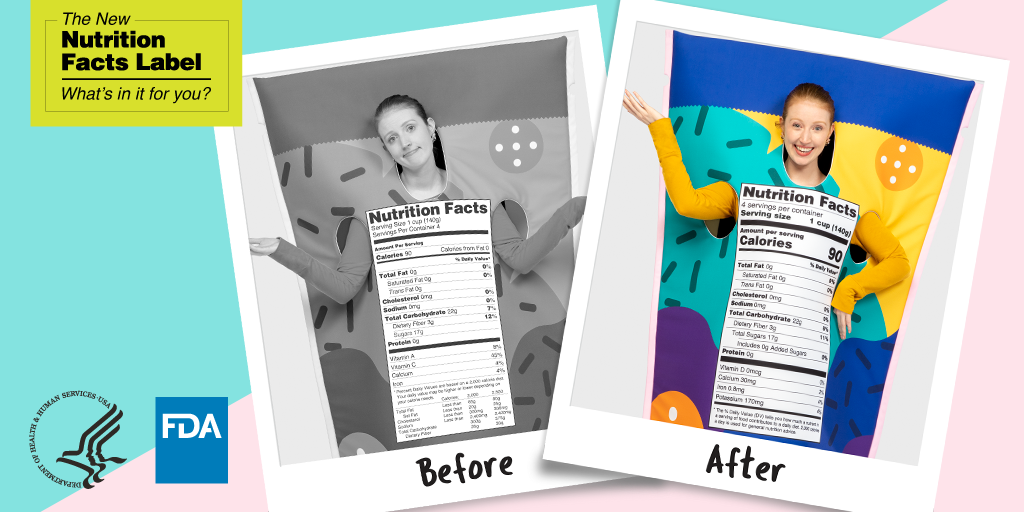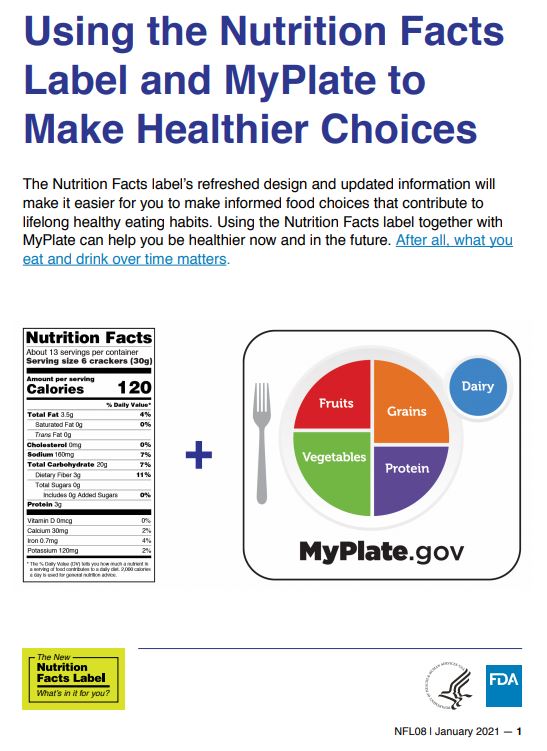National Nutrition Month: Reading Nutrition Labels
March is National Nutrition Month, making it a great time to evaluate the things you consume and determine how they impact your overall heart health. Eating a healthy diet is an easy, effective way to reduce your risk of a heart attack or heart disease, and the U.S. Food and Drug Administration’s Nutrition Facts labels give you all the information you need to make informed and educated decisions about what you put in your body.
The FDA recently revamped its Nutrition Facts labels to make them easier to read and reference. Reading Nutrition Facts labels and using them in conjunction with MyPlate, a nutrition guide published by the U.S. Department of Agriculture, helps you make smart eating and drinking decisions that enable you to live a longer, healthier and more fulfilling life.
Nutrition Facts Label Changes
How have Nutrition Facts labels changed recently, and how do these changes help you follow a healthier diet and lifestyle? For starters, a product’s calorie count and serving size now appear in a larger, more noticeable font. Many people have no idea what a suggested serving size really is, so they may consume two or three portions of a particular food or drink without even realizing it.
Manufacturers also now have an obligation to provide information about added sugars, vitamin D and potassium on their nutrition labels, making it easier for you to limit or control your consumption of certain nutrients. They also have to include information about whether the amount of vitamins and minerals included in a product exceeds the recommended daily value, among other key changes.
MyPlate Food Groups & Dietary Guidelines
While the revamped Nutrition Facts labels provide valuable insight about a particular product, the USDA’s MyPlate initiative helps you make lasting diet and lifestyle changes that enhance your heart and overall health. From a fresh take on the abandoned food pyramid to a database of resources intended to help you meet your healthy eating goals, MyPlate gives you an easy, personalized way to develop healthier eating habits and enact lasting changes that benefit both mind and body.

Image Credit: FDA
MyPlate Personalized Diet Plans
While MyPlate provides a general overview of how much of each food group you should consume, it also takes things a step further, offering a more personalized approach to diet and heart health. The MyPlate Plan feature considers your age, sex, weight and degree of physical activity and then makes personalized recommendations about how many calories you should consume each day – and where they should come from.

Image Credit: FDA
Nutrition Facts Labels & MyPlate Plans: A Perfect Combination
While a personalized MyPlate plan gives you a sense of how you should alter your diet and what foods you need to make a bigger part of it, Nutrition Facts labels now make it easier than ever to get all the information you need about a particular food or drink at a glance. By determining what your body needs and then recognizing where to find it, you can enact lasting lifestyle chances and make sure you make the most of every bite.
What is good for your body is good for your heart, and learning how to read and interpret nutrition labels is a far more effective method of losing weight and staying healthy than following any fad diet. The Standard American Diet places you at high risk of heart disease, but a nutrient-dense diet and the changes you set in motion this month have the potential to lead to not only a longer, healthier lifestyle, but also a higher quality of life.






